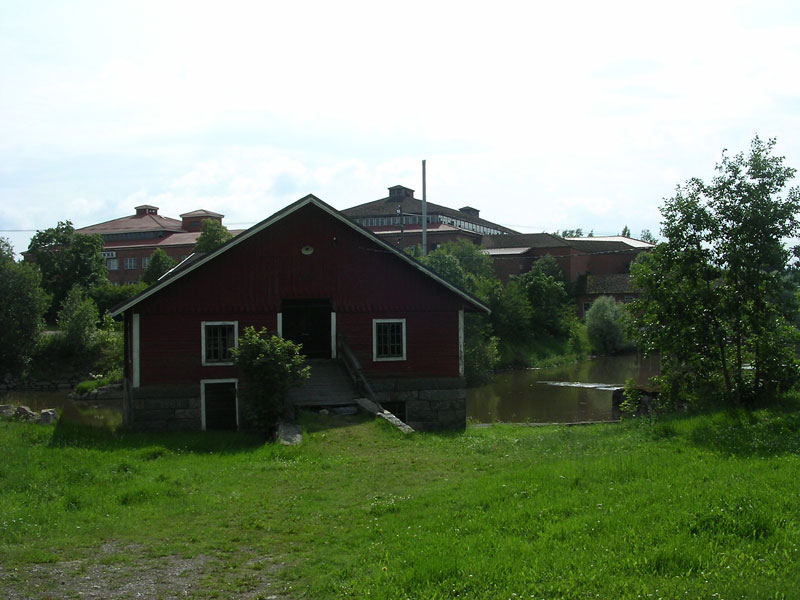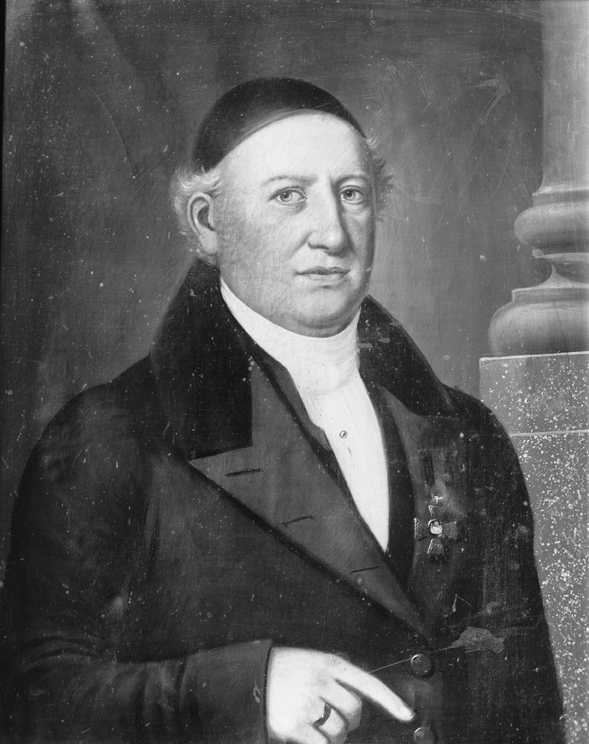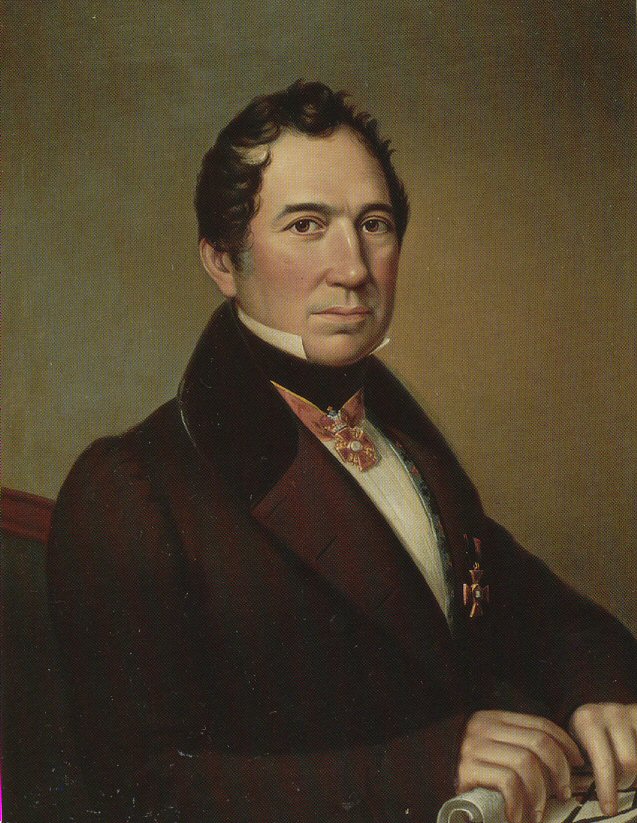|
The Church Of Loimaa Proper
, native_name_lang = Kanta-Loimaan kirkko , image = Kanta-Loimaan kirkko2.jpg , caption = The church in 2016 , location = Loimaa , country = Finland , denomination = Lutheran , architect = Carlo Bassi Carl Ludvig EngelJosef Stenbäck , architectural type = neoclassical , groundbreaking = 1824 , completed date = , capacity = 1200 , parish = Loimaa , diocese = Archdiocese of Turku The Church of Loimaa Proper ( Finnish: ''Kanta-Loimaan kirkko'') is a church located in the municipality of Loimaa, Finland. It serves as the main church for the parish of Loimaa and is a visible landmark in the middle of countryside. Today the church is regarded as a protected site by the Finnish Heritage Agency. History A parish was founded in Loimaa somewhere around 1420's. The church was built to its current location in 1837 and is designed by the Italian-born Carlo Bassi. The location was moved due to lack of space. Previously on the spot of the church there was a secret site for ... [...More Info...] [...Related Items...] OR: [Wikipedia] [Google] [Baidu] |
Loimaa
Loimaa (; historical sv, Loimijoki) is a town and municipality of Finland. It is located in the province of Western Finland and is part of the Southwest Finland region. The municipality has a population of () and covers an area of of which is water. The population density is . Loimaa's neighboring municipalities are Huittinen, Humppila, Koski Tl, Marttila, Oripää, Punkalaidun, Pöytyä, Somero, Säkylä and Ypäjä. History First mentions of Loimaa come from the year 1439 but a parish was founded in the area already a decade earlier. The town was founded in its current form in 1876 as the railway between Turku and Toijala was completed. A legend of Prättäkitti is heavily associated with Loimaa. The town of Loimaa merged with Loimaan kunta (literally "Municipality of Loimaa") on January 1, 2005 and with the municipalities of Alastaro and Mellilä on January 1, 2009. The name ''Loimaa'' comes from the river Loimijoki which flows through the town. Politics After the ... [...More Info...] [...Related Items...] OR: [Wikipedia] [Google] [Baidu] |
Finland
Finland ( fi, Suomi ; sv, Finland ), officially the Republic of Finland (; ), is a Nordic country in Northern Europe. It shares land borders with Sweden to the northwest, Norway to the north, and Russia to the east, with the Gulf of Bothnia to the west and the Gulf of Finland across Estonia to the south. Finland covers an area of with a population of 5.6 million. Helsinki is the capital and largest city, forming a larger metropolitan area with the neighbouring cities of Espoo, Kauniainen, and Vantaa. The vast majority of the population are ethnic Finns. Finnish, alongside Swedish, are the official languages. Swedish is the native language of 5.2% of the population. Finland's climate varies from humid continental in the south to the boreal in the north. The land cover is primarily a boreal forest biome, with more than 180,000 recorded lakes. Finland was first inhabited around 9000 BC after the Last Glacial Period. The Stone Age introduced several differ ... [...More Info...] [...Related Items...] OR: [Wikipedia] [Google] [Baidu] |
Lutheranism
Lutheranism is one of the largest branches of Protestantism, identifying primarily with the theology of Martin Luther, the 16th-century German monk and Protestant Reformers, reformer whose efforts to reform the theology and practice of the Catholic Church launched the Reformation, Protestant Reformation. The reaction of the government and church authorities to the international spread of his writings, beginning with the ''Ninety-five Theses'', divided Western Christianity. During the Reformation, Lutheranism became the state religion of numerous states of northern Europe, especially in northern Germany, Scandinavia and the then-Livonian Order. Lutheran clergy became civil servants and the Lutheran churches became part of the state. The split between the Lutherans and the Roman Catholics was made public and clear with the 1521 Edict of Worms: the edicts of the Diet (assembly), Diet condemned Luther and officially banned citizens of the Holy Roman Empire from defending or propagatin ... [...More Info...] [...Related Items...] OR: [Wikipedia] [Google] [Baidu] |
Charles Bassi
Charles (Carlo) Francesco Bassi (12 November 1772, Turin – 11 November 1840, Turku) was a Finnish architect of Italian descent. He was the first professionally trained architect who permanently worked in present-day Finland. He worked, both as an independent architect and as an official responsible for planning new churches, in a Neoclassical architecture, Neoclassical style. Life Charles Bassi was the brother of ballet dancer Giovanna Bassi and came with her from present-day Italy to Sweden in 1783. Initially, he was employed by the Swedish King Gustav III of Sweden, Gustav III as a Page (servant), page but started studying architecture at the Royal Swedish Academy of Arts in Stockholm in 1784. His principal teacher was Louis Jean Desprez. He was awarded prizes at the academy in 1788 and 1790, and after finishing his studies left for an eight-year-long study trip to Italy and Paris. He thereafter returned to Stockholm and began his career as an assistant to Carl Christoffer Gjör ... [...More Info...] [...Related Items...] OR: [Wikipedia] [Google] [Baidu] |
Carl Ludvig Engel
Carl Ludvig Engel, or Johann Carl Ludwig Engel (3 July 1778 – 14 May 1840), was a German architect whose most noted work can be found in Helsinki, which he helped rebuild. His works include most of the buildings around the capital's monumental centre, the Senate Square and the buildings surrounding it. The buildings are Helsinki Cathedral, The Senate (now the Palace of the Council of State), the City of Helsinki Town Hall, and the library and the main building of Helsinki University. Biography Carl Ludvig Engel was born in 1778 in Charlottenburg, Berlin, into a family of bricklayers. It was probably as a bricklayer apprentice that he first came in contact with his future profession as an architect. He trained at the Berlin Institute of Architecture after which he served in the Prussian building administration. The stagnation caused by Napoleon's victory over Prussia in 1806 forced him and other architects to find work abroad. In 1808 he applied for the position as town archite ... [...More Info...] [...Related Items...] OR: [Wikipedia] [Google] [Baidu] |
Josef Stenbäck
Josef Daniel Stenbäck (May 2, 1854, Alavus — April 27, 1929, Helsinki) was a Finnish church architect and engineer. He designed 35 churches for Finland, which until 1917 was part of the Russian Empire. Four of the churches were located in the current Russian territory of the Karelian Isthmus, ceded to the Soviet Union in 1944. Stenbäck's churches represent Romantic nationalism or Gothic Revival Gothic Revival (also referred to as Victorian Gothic, neo-Gothic, or Gothick) is an architectural movement that began in the late 1740s in England. The movement gained momentum and expanded in the first half of the 19th century, as increasingly .... One of his most famous works is the Juselius Mausoleum. Churches in Finland designed by Josef Stenbäck * Wooden churches : * Brick churches : * Stone churches : * Roughcast churches : References *Suominen-Kokkonen, R. (2007Stenbäck, Josef (1854 - 1929) - arkkitehti, Helsingin teollisuuskoulun opettajaKansallisbiografia (Finnish ... [...More Info...] [...Related Items...] OR: [Wikipedia] [Google] [Baidu] |
Neoclassical Architecture
Neoclassical architecture is an architectural style produced by the Neoclassical movement that began in the mid-18th century in Italy and France. It became one of the most prominent architectural styles in the Western world. The prevailing styles of architecture in most of Europe for the previous two centuries, Renaissance architecture and Baroque architecture, already represented partial revivals of the Classical architecture of ancient Rome and (much less) ancient Greek architecture, but the Neoclassical movement aimed to strip away the excesses of Late Baroque and return to a purer and more authentic classical style, adapted to modern purposes. The development of archaeology and published accurate records of surviving classical buildings was crucial in the emergence of Neoclassical architecture. In many countries, there was an initial wave essentially drawing on Roman architecture, followed, from about the start of the 19th century, by a second wave of Greek Revival architec ... [...More Info...] [...Related Items...] OR: [Wikipedia] [Google] [Baidu] |
Archdiocese Of Turku
The Archdiocese of Turku ( fi, Turun arkkihiippakunta, sv, Åbo ärkestift), historically known as '' Archdiocese of Åbo'', is the seat of the Archbishop of Turku. It is a part of the Evangelical Lutheran Church of Finland, and its see city is Turku. The Archbishop has many administrative tasks relating to the National church, and is the Metropolitan and Primate of the church. In common with other Lutheran and Anglican churches the Archbishop is considered '' primus inter pares'' while all diocesan bishops retain their independence within their respective jurisdictions. This also applies to the Bishop of Turku Archdiocese. The Archdiocese of Turku has a unique episcopal structure as there are two bishops in the Diocese. History Influenced by papal bulls, Swedish magnates in the 12th century set up crusading expeditions to convert the heathens in the eastern Baltic. This resulted in the establishment of the Catholic Church, the Christian religion and the Swedish conquest of ... [...More Info...] [...Related Items...] OR: [Wikipedia] [Google] [Baidu] |
Finnish Language
Finnish ( endonym: or ) is a Uralic language of the Finnic branch, spoken by the majority of the population in Finland and by ethnic Finns outside of Finland. Finnish is one of the two official languages of Finland (the other being Swedish). In Sweden, both Finnish and Meänkieli (which has significant mutual intelligibility with Finnish) are official minority languages. The Kven language, which like Meänkieli is mutually intelligible with Finnish, is spoken in the Norwegian county Troms og Finnmark by a minority group of Finnish descent. Finnish is typologically agglutinative and uses almost exclusively suffixal affixation. Nouns, adjectives, pronouns, numerals and verbs are inflected depending on their role in the sentence. Sentences are normally formed with subject–verb–object word order, although the extensive use of inflection allows them to be ordered differently. Word order variations are often reserved for differences in information structure. Finnish orth ... [...More Info...] [...Related Items...] OR: [Wikipedia] [Google] [Baidu] |
Finnish Heritage Agency
The Finnish Heritage Agency ( fi, Museovirasto, sv, Museiverket), previously known in English as the National Board of Antiquities, preserves Finland's material cultural heritage: collects, studies and distributes knowledge of it. The agency is a cultural and research institution, but it is also a government authority charged with the protection of archaeological sites, built heritage, cultural-historically valuable environments and cultural property, in collaboration with other officials and museums. The Agency offers a wide range and diversified range of services, a professional staff of specialists, the exhibitions and collections of its several museums, extensive archives, and a specialized scientific library, all of which are at the disposal of the general public. The Finnish Heritage Agency is attached to the Ministry of Education An education ministry is a national or subnational government agency politically responsible for education. Various other names are commonly use ... [...More Info...] [...Related Items...] OR: [Wikipedia] [Google] [Baidu] |
Prättäkitti
Prättäkitti (also Rättäkitti) was a Finnish fortune teller or a witch from the household of Manninen, Loimaa (present day Ypäjä). Prättäkitti's magical powers are said to come from the fact that when she was born, the person acting as the midwife was a witch herself. Biography Virtually everything about the life of Prättäkitti is unverifiable and open to debate. It is suspected that she lived somewhere in the 17th century but she has also been connected to Ulriikka Justiina, a housewife in the same household in the 19th century. It is said that she was originally from Nousiainen. According to one story, a land-owning farmer, Teppo from Manninen, saw her rowing a boat while visiting Turku and decided to ask her hand in marriage. Prophecies and alleged witchcraft There are multiple stories about the fortune telling abilities of Prättäkitti. Moreover, she is said to have wielded witchcraft and according to one story, trialed for that too. Some popular things Prättä ... [...More Info...] [...Related Items...] OR: [Wikipedia] [Google] [Baidu] |


.jpg)



_-_facade_on_Piazza_dei_signori.jpg)
